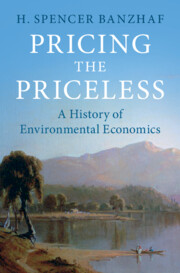Book contents
- Pricing the Priceless
- Historical Perspectives on Modern Economics
- Pricing the Priceless
- Copyright page
- Dedication
- Contents
- Figures
- Acknowledgments
- Acronyms
- Prologue
- 1 Introduction
- 2 Conservation and Preservation
- 3 Do Economists Know about Lupines? Economics versus the Environment
- 4 Consumer Surplus with Apology
- 5 John Krutilla and the Environmental Turn in Natural Resource Economics
- 6 Pricing Pollution
- 7 Lives, Damned Lives, and Statistics
- 8 Benefit–Cost Analysis: Objective or Multi-objective?
- 9 Constructing Markets
- Epilogue
- References
- Index
- Other Books in the Series
3 - Do Economists Know about Lupines? Economics versus the Environment
Published online by Cambridge University Press: 19 October 2023
- Pricing the Priceless
- Historical Perspectives on Modern Economics
- Pricing the Priceless
- Copyright page
- Dedication
- Contents
- Figures
- Acknowledgments
- Acronyms
- Prologue
- 1 Introduction
- 2 Conservation and Preservation
- 3 Do Economists Know about Lupines? Economics versus the Environment
- 4 Consumer Surplus with Apology
- 5 John Krutilla and the Environmental Turn in Natural Resource Economics
- 6 Pricing Pollution
- 7 Lives, Damned Lives, and Statistics
- 8 Benefit–Cost Analysis: Objective or Multi-objective?
- 9 Constructing Markets
- Epilogue
- References
- Index
- Other Books in the Series
Summary
The rift between Gifford Pinchot and John Muir, between the conservationist and preservationist movements, left an unsatisfactory state of affairs for economists working on early environmental policy questions. Moreover, midway through the 20th Century, economics was still defined as the study of material welfare. An interdiciplinary social scientist like Aldo Leopold concluded that economics thus could have little to say about the value of preserved landscapes or species. Yet economics was relevant for preservation because incentives mattered. He advocated a new interdiciplinary ecological economics to overcome these problems. Meanwhile, economists in government were beginning to confront environmental questions, such as the value of outdoor recreation, in their benefit-cost analyses of dams and other water projects. They too concluded such questions were outside their field and could not be addressed. Thus, at mid-century, the future existence of a field called environmental economics was very much in doubt.
Keywords
- Type
- Chapter
- Information
- Pricing the PricelessA History of Environmental Economics, pp. 52 - 76Publisher: Cambridge University PressPrint publication year: 2023

